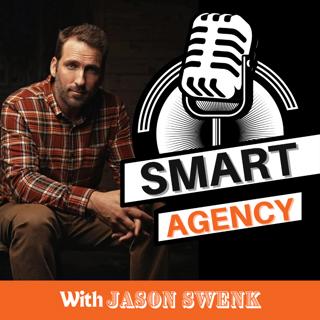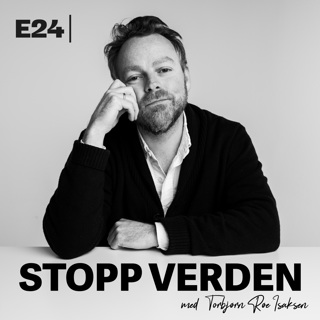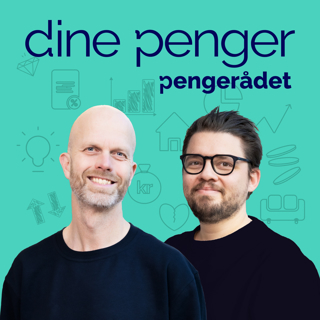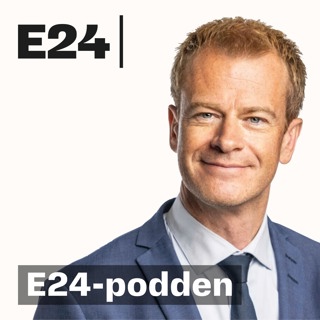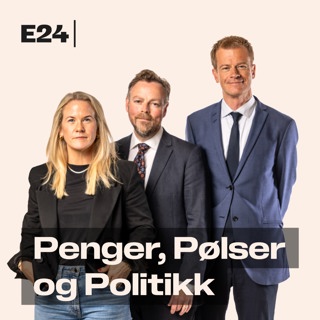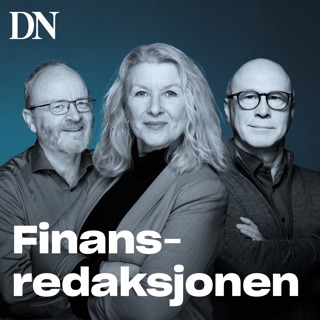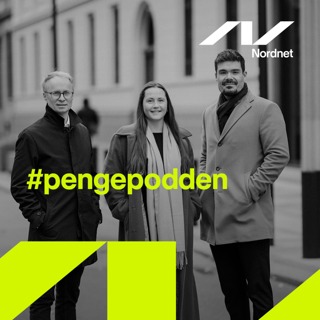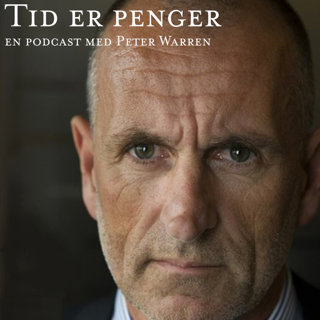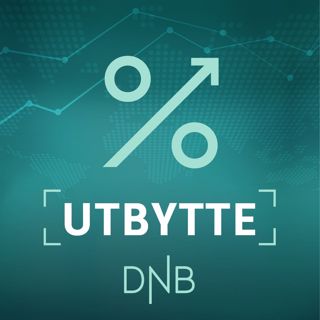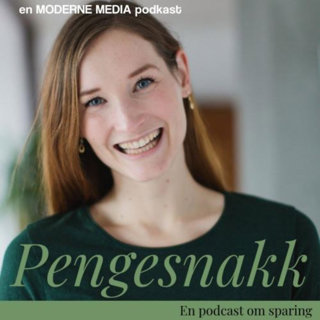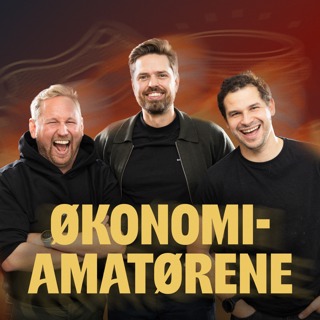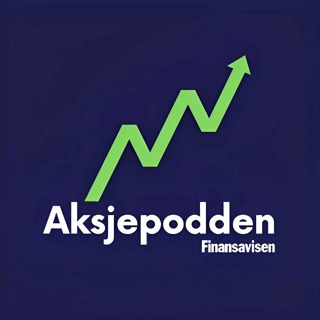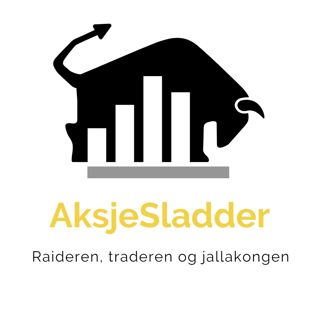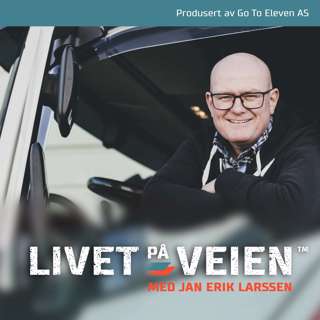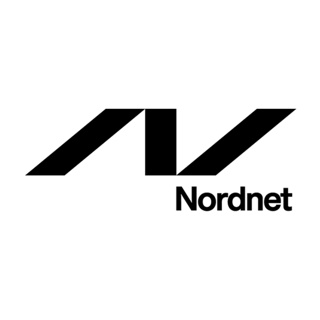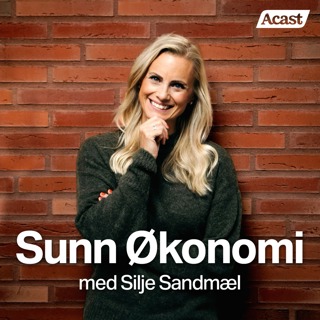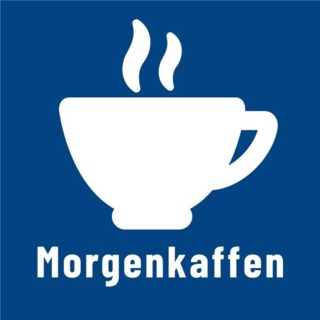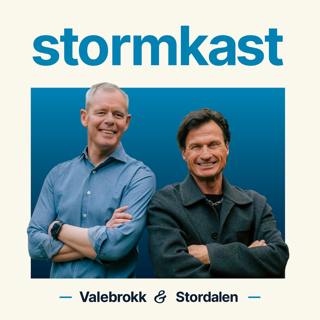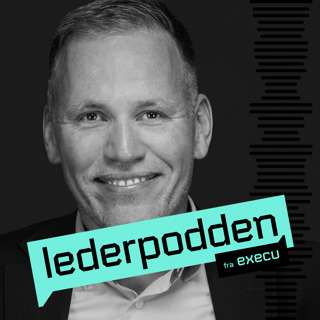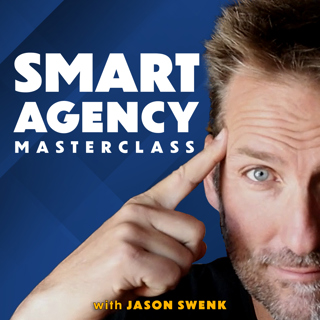
Leveraging Fractional Support to Scale Your Agency with Sydney Mulligan & Lauren Aquilino | Ep #788
Would you like access to our advanced agency training for FREE? https://www.agencymastery360.com/training Have you ever turned to freelancers to grow your agency’s capabilities? What about using fractional support once you realized you couldn’t do everything as the founder and face of the agency? What if the key to sustainable growth isn’t building a massive in-house team, but leveraging the right fractional support at the right time? Today’s guests are two agency owners who turned a modest freelance setup into a thriving multimillion-dollar business—largely through referrals and the strength of their personal networks. They share how a flexible team of contractors became their secret weapon, offering the agility to scale without the overhead of a traditional agency structure. Tune in to learn how former competitors found a way to build a successful collaboration and why fractional support was a big part of their operation from the start. Sydney Mulligan and Lauren Aquilino are the co-founders of Emmie Collective, a for-hire network of elite independent & freelance marketing, sales, and revops consultants with big tech energy. They share their journey of entrepreneurship, reflect on their backgrounds as former competitors in the marketing industry, and the bond that brought them together. Sydney also recounts her experience of being laid off while on maternity leave, which sparked the idea for Emmie Collective while Lauren discusses her transition from freelancing to building a business as demand for her services grew. In this episode, we’ll discuss: Why the fractional model was the best option for bootstrapping an agency. When should the agency owners stop being the face of the agency? External funding vs. control in agency growth. Subscribe Apple | Spotify | iHeart Radio Sponsors and Resources E2M Solutions: Today's episode of the Smart Agency Masterclass is sponsored by E2M Solutions, a web design, and development agency that has provided white-label services for the past 10 years to agencies all over the world. Check out e2msolutions.com/smartagency and get 10% off for the first three months of service. When Competitors Become Co-Founders Before forming their partnership, Sydney and Lauren worked at competing agencies while also participating in Marketo's customer champion program. Their paths diverged when both eventually left their respective agencies—Lauren to pursue freelance work, initially planning for just 10 hours weekly during summer to rest after quitting her job. However, her freelance business quickly expanded beyond expectations, growing to 20 hours weekly and requiring additional contractor support. Meanwhile, Sydney had taken an in-house position but faced an unexpected setback when she was laid off during her maternity leave. As she navigated the job interview process, she began conversations with Lauren, who was contemplating transforming her freelance operation into a formal business. Lauren recognized Sydney as a valuable potential partner—in fact, the only person she would consider building a business with. After discussing their business vision, they decided it was time to meet face-to-face. Their first in-person meeting in Florida became what they jokingly refer to as their "speed dating" session. During this three-day encounter, they exchanged ideas and developed business plans while Sydney cared for her six-week-old baby. The meeting proved decisive—by the time they both landed back home, they had confirmed their mutual desire to build an agency together. Why the Fractional Model Is Best for Bootstraping an Agency Their participation in the customer champion program helped Sydney and Lauren establish strong reputations within a specialized niche market. With this foundation, they were able to launch their agency business with a strong base of referral clients. One unexpected advantage they discovered was the relative ease of attracting consultants eager to work with their new agency. Anticipating potential staffing challenges typical for startups, they had proactively designed their business model around freelancers and contractors. This strategy allowed them to sidestep the common industry pressure of requiring employees to meet specific billable hour quotas. Instead, freelancers had the flexibility to determine their own workload and schedules. To this day they continue to work with consultants, firmly believing that fractional support provides clients with optimal access to senior specialized expertise. By leveraging fractional experts, their agency effectively addresses specific client challenges, enhances operational efficiency, and frees internal resources to focus on strategic growth initiatives. When Should the Founders Stop Being the Face of the Agency? Balancing Growth and Client Relationships Sydney and Lauren's agency growth eventually confronted them with the challenge of hitting the limit on what they could do by themselves. With the agency growing, more and more clients and consultants coming in, and traveling for events, it just got to be too much. Sydney recalls a particularly stressful period when she felt overwhelmed, unable to keep track of their growing client base and the myriad responsibilities that came with it. They recognized they could no longer manage everything alone. When an agency owner clings to control it causes issues with bottlenecking, even become an operational issue and their agency’s biggest profit leak. For Sydney and Lauren, was time for a change and the first crucial step was hiring a fractional account manager to ensure there was someone else keeping track of every client. This not only alleviated some of the burdens on Sydney but also allowed them to focus on strategic growth rather than getting bogged down in day-to-day operations. It’s not an easy shift to make, and quite tricky for Sydney and Lauren, who built the agency on the back of their own networks and therefore are still the face of it. They continue to wrestle with how much to pull back, risking that clients feel they no longer interact with them. For those facing similar challenges, it's worth noting that even prominent agency leaders like Gary Vaynerchuk maintain their status as organizational figureheads while having minimal involvement in daily operations. This successful transition typically requires thoroughly training team members in core agency values to ensure consistent decision-making and actively promoting team capabilities to clients—emphasizing that a dedicated team provides superior service compared to founder-only support. External Funding vs. Control in Agency Growth After bootstrapping their business, Sydney and Lauren now face the question of whether or not to take on funding to continue to scale. While they recognize the potential advantages that investment capital could bring—accelerated expansion and resources for recruiting top talent—they also remain cautious about the significant tradeoffs involved. Most of all, they worry about the fundamental shift from being independent business owners to essentially working for investors since "once you start raising money, you'll always be raising money"—with a continuous cycle of accountability to external stakeholders. For the time being, they continue to prioritize maintaining complete control over their growth trajectory, preferring the stability and autonomy of their current approach even if it means potentially slower expansion. Do You Want to Transform Your Agency from a Liability to an Asset? Looking to dig deeper into your agency's potential? Check out our Agency Blueprint. Designed for agency owners like you, our Agency Blueprint helps you uncover growth opportunities, tackle obstacles, and craft a customized blueprint for your agency's success.
30 Apr 19min

Speed Up Your Sales Cycle with a Productized Offer with Spencer Powell | Ep #787
Would you like access to our advanced agency training for FREE? https://www.agencymastery360.com/training Do you have a sales system in place for showcasing your agencies services at a low-cost price point that creates an easy “yes” for your prospects? Many agencies are giving away insights in order to land big projects. However, a well-crafted foot-in-the-door offer helps you close clients faster by giving them a taste of what it’s like to work with your agency, but also allows you to qualify whether a prospect is the right fit for your agency and team. Today’s featured guest shares how productizing his offer helped streamline his sales process and communicate a clear value proposition. Furthermore, after building his strategic foot-in-the-door offer, he’s been testing different pricing models to make it an easy “yes” for prospects while still attracting high-quality clients. Discover practical insights on scaling your agency, improving your sales strategy, and boosting conversion rates with intentional, value-driven offers. Spencer Powell is the founder of Builder Funnel, a digital marketing agency with roots in direct mail. He shares his journey transforming his family's direct mail business into a digital marketing powerhouse, discusses strategies for converting clients faster and easier, and talks about his recent experience building a foot in the door offer, which he is currently in the process of adapting and testing. Spencer has been on the show before talking about the game-changing move to get paid for strategy instead of giving away ideas and research for free. In this episode, we’ll discuss: How a productized offer can revolutionize conversions. Building a successful foot-in-the-door offer. How could rethinking the entry-level pricing benefit sales? Subscribe Apple | Spotify | iHeart Radio Sponsors and Resources Wix: Today’s episode of the Smart Agency Masterclass is sponsored by Wix Studio, the all-in-one platform designed to help agencies scale without the headaches. With intuitive tools, robust native business solutions, and low maintenance, Wix Studio lets your team focus on what matters most—delivering exceptional value to your clients. Ready to take your agency to the next level? Visit wix.com/studio and discover how Wix Studio can transform your workflow, boost profits, and strengthen client relationships. Three Generations of Marketing Evolution and Adaptability Spencer's marketing roots run deep as part of a family legacy. His grandfather established a direct mail company that his father later acquired in the 1990s. Demonstrating entrepreneurial spirit early on, Spencer launched his own social media business as a side hustle immediately after college. The family business reached a turning point when Spencer's father attended an industry event where he heard direct mail was becoming obsolete. Recognizing the need to evolve, he invited Spencer to help transition the agency into the digital era. Together, they developed the agency’s brand, realizing that having a niche would be an important to create a competitive advantage. This new direction proved so promising that they eventually sold off the direct mail division to concentrate fully on growing their digital brand. As the final step in this transformation, Spencer ultimately purchased his father's ownership stake and continued driving the business forward. How a Productized Offer Revolutionized Conversion Rates Like many agency owners, Spencer allowed himself to be in the sales seat for far too long, with an offer that included building custom proposals for all incoming prospects – a time-consuming process with unpredictable returns. The first step out of this was productizing his offer, which led to the creation of the "Remodeler Marketing Blueprint," a fixed-fee service providing clients with comprehensive one-year marketing strategies. This productized approach served dual purposes: it systematized the sales process while establishing a clear value proposition. Clients were offered to either implement the strategies independently using provided resources or hire the agency for full execution. By doing so, his agency not only streamlined their sales process but also established a clear value proposition and the agency's conversion rates soared from 15% to 70%. Despite this success, a one-year marketing plan was still a huge undertaking and there was opportunity to develop an even more accessible entry-level offering that could serve as a true foot-in-the-door product. 3-Step Agency Sales System to Build a Foot-In-The-Door Per Jason’s suggestion, Spencer and his team borrowed the structure to build a foot in the door strategy and set up a discovery call – ranging from 15-30 minutes – which they use to assess if the prospect is a good fit, in the right industry, and are asking for services that the agency offers. If this discovery call is a success, the team will move on to selling a marketing framework call, a $497 call where they do an exhaustive run through of their website, look into their SEO and ads, and walk them through their Attract, Convert, and Measure framework. At the end of the call, the client will either take what they’ve learned and implement it themselves, move on to the next step of working with his agency, or ask for their money back. The framework was a success, with 35.5% of those who participated in the framework call converted into clients last year. Jason emphasized that the initial discovery call should evaluate whether prospects would be good long-term agency partners rather than just qualifying them for the framework call. Following this advice, Spencer encourages his sales team to book as many calls as possible, to get the practice they need to start discerning which prospects would actually move ahead to work with the agency and which never intended to get beyond that call. Implementing these steps was a real game changer for Spencer, who can now continually tweak, update, and improve it by recording the sales calls and review them with the team to highlight successes and room for improvement. All in all, the structure of an offering ladder will make it easier for the prospect, the sales team, and overall for the agency to offer value and better qualify clients. Rethinking Entry-Level Pricing Now, Spencer is in the process of reviewing his agency’s foot-in-the-door pricing, by lowering it from the current $497 to around $197. Why charge less? Spencer finds that prospects often need to consult with higher-ups before committing to the current Price, which either slows down the process or could be the end of that interaction. However, these sorts of instances could indicate they’re not speaking with a decision-maker, which agencies ideally should be when it comes to selling a foot in the door. For now, early results indicated a promising trend, with a notable increase in the number of scheduled calls and successful conversions. On one hand, this is a positive development, but it could also mean that the lower price point is also attracting prospects who are not the agency’s ideal client. The team is exploring different ways to frame this pricing adjustment, such as positioning it as a limited-time offer or explaining that while the agency barely breaks even at this price point, it serves to identify genuinely interested prospects. They're also careful to clarify that this special rate doesn't reflect their standard hourly billing, which is substantially higher. It’s something that Spencer will continue to evaluate with his team. If the lower price helps them acquire more clients monthly, it may prove beneficial in the short term and something they can revise in a couple of months looking, for instance, at client retention and how those relationships ultimately played out. Do You Want to Transform Your Agency from a Liability to an Asset? Looking to dig deeper into your agency's potential? Check out our Agency Blueprint. Designed for agency owners like you, our Agency Blueprint helps you uncover growth opportunities, tackle obstacles, and craft a customized blueprint for your agency's success.
27 Apr 20min

Keep Clients Longer: 2 Key Elements of Effective Client Communication with Tim Riddle| Ep #786
Would you like access to our advanced agency training for FREE? https://www.agencymastery360.com/training How often and effectively do you communicate with clients? What strategies are you implementing to build trust and develop lasting relationships to retain good clients? We all have blind spots in business, and today's featured guest identified one of the most significant ones for business owners is client communication and how messages succeed or fail to get through effectively. He’ll share his journey of starting a business with the mission of helping business owners identify and repair communication gaps with clients to forge stronger relationships and discuss how he found his niche. He'll also address common communication blind spots that undermine client relationships and emphasize why agency owners must remember that this is fundamentally a relationship business—one where building connections should precede any sales pitch. Join us for insights into marketing, communication, and the importance of addressing blind spots in both business and life. Tim Riddle is the founder of Discover Blind Spots, a marketing agency that specializes in helping financial advisors uncover and address these blind spots in their marketing and messaging. He shares his journey into the marketing agency world, the origin of his agency’s unique name, and how his exploration of blind spots in life led him to identify communication as a critical area where businesses often struggle. In this episode, we’ll discuss: Choosing a niche in solving their common blind spots. 2 key elements of client communication. Letting clients have the spotlight to build trust. Subscribe Apple | Spotify | iHeart Radio Sponsors and Resources E2M Solutions: Today's episode of the Smart Agency Masterclass is sponsored by E2M Solutions, a web design, and development agency that has provided white-label services for the past 10 years to agencies all over the world. Check out e2msolutions.com/smartagency and get 10% off for the first three months of service. Choosing a Niche and Solving their Common Blind Spot Tim's agency name, Discover Blind Spots, originated from a book he had written years before contemplating entrepreneurship. In "Blind Spots: What You Don't See Can Hurt You," he explored various cognitive and perceptual gaps people commonly experience. During his research, he found one theme kept coming up: communication failures. With entrepreneurial insight, Tim recognized this widespread communication gap as a potential business opportunity. He launched his venture with an ambitious vision of transforming business owners' careers through improved communication. Despite starting with no clients and no immediate prospects, he couldn’t let go of the idea without at least trying. Initially, he started by offering his services for free asking only for positive reviews, aiming to build credibility and visibility. However, the true turning point came unexpectedly during a conversation with a friend who was a financial advisor. During their conversation, Tim inquired about his friend's client relationship management approach and got the typical answer of meeting with them for lunch every once in a while. When Tim learned his friend had approximately 300 clients but had only arranged a handful of lunches that year, he saw an opportunity to fill that communicational gap and offered a tailored solution that included creating content, both video and written that would reflect the advisor's voice and perspective, to authentically communicate and engage with his clients. It was a risk to pivot his focus towards financial advisors, a sector he had not originally planned to target, but it was this very risk that led to the establishment of a successful niche for his agency. Transitioning to Premium Pricing Based on Value While that was his first introduction to what would become his niche going forward, it did not immediately translate into paid work. The relationship with this financial advisor served as a crucial stepping stone rather than a direct revenue source. That milestone came later, as Tim’s friend introduced him and recommended him to more potential clients and his opportunities in the sector grew. Once he saw the opportunity to monetize his services, Tim started by charging a modest $500 per project, a common approach among agency owners. Finally, once he landed his first big client, he was asked to come up with a monthly fee and upgraded to charging $5,000 per month. It was a shift to a value-based pricing model most agency owners take too long to adopt and a starting point to truly start scaling the agency. 2 Key Elements of Top-Notch Client Communication We've all experienced customer service that starts strong during the sales process but deteriorates once the purchase is complete. Poor follow-up communication leaves clients with unanswered questions about their purchase, casting a negative shadow over the entire experience. Responsiveness: Tim believes silence is the enemy in client relationships. He says there's never a good reason to allow communication gaps that make clients question the relationship. Likewise, he warns against applying a transactional mindset to a relationship-driven business. This only serves to frustrate clients and lead to missed opportunities. Being responsive doesn't mean having immediate answers or dropping everything to find them. Often, a simple acknowledgment that you don't have the information yet but are working to get it promptly can significantly reassure clients. Adaptability: Another key aspect of Tim's approach is identifying each client's preferred communication channel early in the relationship. People have different preferences—some avoid phone calls and find emails to be less intrusive while others prefer them as a quicker way to solve an issue. By adapting to the client's preferred mode of communication, agencies can save considerable time and stress. Interestingly, if you're attentive, clients often reveal their communication preferences through their behavior without you having to ask directly. For instance, if a client rarely responds to emails but answers calls promptly, they likely prefer handling matters quickly by phone. Taking the extra effort to communicate in a style that resonates with each client leads to faster resolutions and more productive partnerships. Allowing Clients to Have the Spotlight Leads to Trust & Effective Communication Tim's efforts to adapt to clients have extended beyond just communication channels to improve the overall client experience, particularly during initial meetings. Traditionally, he would schedule two-hour sessions packed with questions, aiming to leave with a comprehensive 90-day action plan. More recently, however, he began to start the meeting by asking the client “tell me a little about yourself”. This can lead to a 5-minute summary or a 30-minute account of their business’ history but Tim finds letting the client feel heard helps out them at ease and leads to smoother more amicable meetings. As an expert, you might quickly identify solutions to a client's problems within minutes of meeting them. However, rushing to provide answers won't help establish the trust necessary for a successful partnership. Building that sense of safety requires patience—sitting back and truly listening as clients share what they believe is essential information. This approach enables them to feel confident that you have a complete understanding of their situation before developing an action plan. People have a fundamental desire to be understood. By creating space for clients to share their stories and experiences, businesses can cultivate meaningful trust and rapport that serve as the bedrock for successful long-term relationships. Do You Want to Transform Your Agency from a Liability to an Asset? Looking to dig deeper into your agency's potential? Check out our Agency Blueprint. Designed for agency owners like you, our Agency Blueprint helps you uncover growth opportunities, tackle obstacles, and craft a customized blueprint for your agency's success.
23 Apr 26min

Building Effective Client-Agency Relationships with Alex Hultgren | Ep #785
Would you like access to our advanced agency training for FREE? https://www.agencymastery360.com/training What truly makes clients choose one agency over another? What are the essential qualities that elevate an agency from service provider to trusted partner? Today's featured guest brings a rare 360-degree perspective to these crucial questions. As a fractional CMO with extensive experience on both sides of the relationship, our guest provides unique insights into the dynamics of successful agency-client partnerships. Tune in for actionable insights that will help agencies strengthen their client relationships, refine their service approach, and position themselves as indispensable strategic partners. Alex Hultgren is a seasoned fractional CMO with extensive experience in both client and agency roles. He shares his journey through the marketing landscape, from starting at Ford Motor Company and leading marketing efforts at Polaris to transitioning to agency life at Hayworth and later starting his own business. Alex discusses the expectations that brands have when working with agencies, what he used to look for in an ideal agency partner, and the reason he kept his business boutique and has chose to work with contractors. In this episode, we’ll discuss: Learning to forge deep agency partnerships in corporate marketing. Elements of effective agency relationships. Why he chose to prioritize autonomy over growth. Subscribe Apple | Spotify | iHeart Radio Sponsors and Resources Wix: Today’s episode of the Smart Agency Masterclass is sponsored by Wix Studio, the all-in-one platform designed to help agencies scale without the headaches. With intuitive tools, robust native business solutions, and low maintenance, Wix Studio lets your team focus on what matters most—delivering exceptional value to your clients. Ready to take your agency to the next level? Visit wix.com/studio and discover how Wix Studio can transform your workflow, boost profits, and strengthen client relationships. Forging Deep Agency Partnerships in Corporate Marketing Alex’s professional trajectory spanned both corporate and agency environments before culminating in entrepreneurship. He started his career working at Ford Motor Company, as part of their marketing leadership program for fourteen years, and then running marketing for Victory Motorcycle as part of Polaris. He then went on to work on the agency side as one of the three leads of Walmart’s media accounts at Hayworth. In 2021 he decided to take all that experience to build his own business. During his time at Ford, Alex only ever worked with one agency team, the team at JTW. Although large corporations normally have many agencies working at different projects at a time, Ford preferred to maintain an exclusive agency partnership and, even when digital marketing started to be an important part of their strategy, they only used other agencies as contractors for limited periods. On one hand, this meant there weren’t many options if he didn’t like the work, other than asking them to go back to the drawing board. On the other hand, it also meant they formed a deeply integrated partnership, as they were more of an extension of his team than merely external service providers. By contrast, at Polaris he had a fraction of the budget but found himself coordinating multiple specialized agencies handling different aspects of the business, which proved to be considerable demanding. However, in both cases he always saw agencies as partners and part of his team. The Foundation of Effective Agency Partnerships In choosing agencies, one of the major problems Alex encountered was agencies that promised they could deliver on something when they clearly couldn’t. For him, it came down to Could they be trusted to do the work? Did they know what they were doing? Most clients are looking for agencies that can alleviate their burdens by providing solutions without requiring micromanagement. Hence, an ideal agency partner should be able to take a problem, devise a solution, and communicate progress effectively. However, trust is not enough when communication is lacking and one of the major hurdles Alex faced working on the client side was getting enough clarity from the company on what they wanted from the agency. To bridge this gap, agencies must take the initiative to foster open lines of communication. This includes asking the right questions to extract meaningful feedback from clients and internal stakeholders. Finally, Alex also believes an agency should be able to take calculated risks because innovative ideas can sometimes face resistance from traditional corporate structures. The ability to push through skepticism and advocate for creative solutions is a testament to the trust that exists within a strong agency-client relationship. To address this client skepticism about design or content choices, Alex suggests AB testing the material and see how customers behave. This approach shifts the conversation from subjective preferences to measurable customer behavior—the ultimate metric for evaluating marketing effectiveness. Prioritizing Autonomy Over Growth Even after successfully scaling his agency, Alex made a deliberate choice to maintain a lean operation, preferring to collaborate with contractors rather than building a traditional team structure. To him, the more traditional style seemed like an option that would take away the flexibility and freedom he hoped to obtain by building his business. Right now, he has the ultimate authority regarding what work and clients he takes on, and it’s not something he would give up. While operating as a small agency might seem limiting, Alex is part of a group that provides him with extensive capabilities without sacrificing independence. This federation—called the Chameleon Collective, is comprised of 40-50 fractional executives (CMOs, CROs, and CTOs) alongside approximately ninety specialized marketing experts and enables a modular approach to team building. This model also addresses a problem that plagues big organizations: meeting waste. From his time working at Ford Alex remembers the frustration of back-to-back meetings that yield little value. He sees a need to reevaluate the purpose of meetings, advocating for a shift away from status updates that could be conveyed via email to more focused discussions aimed at problem-solving, as well as scheduling 15-minute meetings instead of defaulting to longer time blocks and empowering team members to opt out of meetings that do not pertain to their roles. Ultimately, Alex has prioritized an agency model that prioritizes effectiveness, strategic alignment, and adaptability—values that directly contrast with the rigid structures he experienced in his corporate career. Do You Want to Transform Your Agency from a Liability to an Asset? Looking to dig deeper into your agency's potential? Check out our Agency Blueprint. Designed for agency owners like you, our Agency Blueprint helps you uncover growth opportunities, tackle obstacles, and craft a customized blueprint for your agency's success.
20 Apr 20min

Transforming Agency Operations with AI Agents (not just ChatGPT) with Khushbu Doshi | Ep #784
Would you like access to our advanced agency training for FREE? https://www.agencymastery360.com/training Are you still relying on basic ChatGPT prompts while your competitors create intelligent systems that work for them around the clock? The gap between basic AI users and strategic implementers is widening rapidly—and it could determine which agencies thrive in the coming years. Today's featured guest leads the pack for this AI revolution. Through systematic implementation of advanced automation solutions, she drove an impressive 20% productivity increase across her agency's operations. By strategically integrating AI technologies throughout their processes, she's transformed her agency's capabilities and efficiency. Additionally, she’s now also helping businesses achieve these same results. Join us as we explore the exciting opportunities AI presents for businesses today and learn about her most successful tool: AI agents. We welcome back Khushbu Doshi, COO of E2M Solutions, a white label agency partner where she focuses on driving more business and creating a world-class experience for their agency community to help them grow and reach their goals. With over eight years of experience and having worked with more than 500 agencies, Khushbu dives into her recent journey exploring AI, including a significant productivity boost of 20% through automation. She also talks about AI agents, explaining how they differ from simply using tools like ChatGPT, and highlights their potential to streamline processes and enhance efficiency for agencies. In this episode, we’ll discuss: Why agents are the next step in AI usage in agencies. AI-powered onboarding. Ideas to expand AI application. Subscribe Apple | Spotify | iHeart Radio The Next Evolution of AI for Agencies: From Prompt Engineering to AI Agents Most people think of AI innovation as learning to use ChatGPT and asking the right questions to get the most effective answers. While prompt engineering certainly has value, it represents only the beginning of AI's potential for agency operations. The next evolution—AI agents—offers significantly more sophisticated capabilities that can transform agency workflows. Agents are a more specialized application of artificial intelligence designed to perform specific tasks based on user-defined parameters. How is this relevant for agencies? Unlike general-purpose AI tools, which provide responses based on a broad range of inputs, AI agents can be customized to understand and execute particular functions. They can be trained to understand particular clients, recall campaign histories, apply agency-specific methodologies, and operate within defined strategic frameworks. This means that agency teams now have the ability to develop custom AI agents trained to operate according to specific requirements. The resulting tool works much better compared to just a conversation with ChatGPT. AI-Powered Employee Onboarding For agency owners interested in exploring AI agents, the process is remarkably accessible. Starting on the ChatGPT platform, users can simply select "create," name their agent, and begin training it with relevant information like branding guidelines, past success stories, and common client challenges. In her case, Khushbu also uses AI agents for onboarding new new team members dreading the prospect of reading through extensive standard operating procedure (SOP) documents. However, it’s still a vital part of their training, so Khushbu thought of updating the process and making it more dynamic by training an agent to be an SOP expert. She fed it all the SOPs and instructed it to answer only the questions asked to it without searching the internet. This way, the SOPs are the agent’s knowledge base, never defaulting to the web for answers. After implementing this system, Khushbu conducted a comparative test by providing new team members with both traditional SOP documentation and access to the AI agent. The new team members were fascinated by the idea of not having to go to a supervisor with their questions and maybe feeling inadequate. Instead, they can ask as many questions as they like without feeling judged. This efficiency not only saves time but also allows team members to focus on more strategic tasks rather than getting bogged down in repetitive information retrieval. Expanding AI Agent Applications in Agency Operations Quality Assurance Automation AI agents also excel in quality testing and following precise procedures consistently. You can program an agent to follow detailed checklists, ensuring that all necessary steps in a process are completed efficiently, thereby saving time and resources while maintaining high standards. Khushbu suggests implementing a fallback strategy for comprehensive quality assessment. When an agent encounters limitations in its testing capability, it should clearly document: Which items it successfully evaluated Which items it couldn't assess Specific reasons for any testing limitations This strategy delivers substantial efficiency gains even when complete automation isn't possible. If the agent can only check 300 out of a list of 500 points, it has still reduced the amount of work for the assigned employee to do by 200 points. Creating an AI Agency Within Your Agency Furthermore, you can program agents to work a specific role within your team and have several agents to communicate with each other. In this sense, you can build an AI social media team, with a CMO, strategist, tester, etc, and automate 90% of the marketing process. With AI agents generating ideas, testing concepts, producing initial drafts, and evaluating performance metrics, the human team can then focus on selecting optimal approaches, refining creative elements, and adding the distinctive perspective that differentiates the agency's work. Competitive Intelligence Automation Finally, it’s also a great way to automate the research needed in your particular industry. If you want to know what your competitors are up to, just program an agent to do that research for you and present a summary of the campaigns they’re running and you’ll be saving a lot of time. A Wake-Up Call for AI-Reluctant Agencies Right now it seems every day there are new ways to integrate AI into your agency services and it can be as exciting as it can be overwhelming. Just remember that this technology has the potential to make your life easier in many ways, and that’s how it should be used. As organizations explore the potential of AI tools, try to remain open-minded and proactive in seeking out innovative solutions. Khushbu encourages listeners to look beyond the mainstream offerings and discover the myriad of tools that can enhance their operations. By doing so, they can position themselves at the forefront of technological advancements and operational efficiency. Refusing to use AI nowadays would be like refusing to use the internet back in the late 90s. The technology is already here so there’s no going back; It’s only a matter of whether or not you’re willing to adapt and not be left behind. Do You Want to Transform Your Agency from a Liability to an Asset? Looking to dig deeper into your agency's potential? Check out our Agency Blueprint. Designed for agency owners like you, our Agency Blueprint helps you uncover growth opportunities, tackle obstacles, and craft a customized blueprint for your agency's success.
16 Apr 17min

Is AI Killing SEO as an Agency Service? 3 Core Principles of SEO with Lindsay Halsey | Ep #783
Would you like access to our advanced agency training for FREE? https://www.agencymastery360.com/training Is SEO still a viable service offering? If you’re an SEO agency, are you at risk for extinction? With AI taking over many industries at the moment, it’s no wonder people are asking if it’s rise means the death of SEO. Today’s featured guest is an SEO expert that found her path into the industry after discovering her passion for tech. She discusses how AI is reshaping the SEO industry — not eliminating it, but transforming its execution and potential. The fundamental principles that have always driven search engine optimization continue to matter, though their implementation evolves alongside technological advancement. Tune in to gain insights into how forward-thinking businesses are adapting their SEO strategies to thrive in this new environment, and gain practical insights for navigating this shifting digital terrain. Lindsay Halsey is the owner of Pathfinder SEO an agency that helps clients grow their recurring revenue by getting the system, tools, and training to add SEO services to their agency. She reflects on the early days of SEO, reminisces about outdated practices, and talks about why the rise of artificial intelligence and “alternative search engines” does not mean you should stop investing in SEO. In this episode, we’ll discuss: 3 core principles of SEO that haven’t changed. Did AI kill SEO? Subscribe Apple | Spotify | iHeart Radio Sponsors and Resources Wix: Today’s episode of the Smart Agency Masterclass is sponsored by Wix Studio, the all-in-one platform designed to help agencies scale without the headaches. With intuitive tools, robust native business solutions, and low maintenance, Wix Studio lets your team focus on what matters most—delivering exceptional value to your clients. Ready to take your agency to the next level? Visit wix.com/studio an Turning a Love of Digital Technology into an SEO Agency In the early days of SEO, when tactics like hiding keywords in same-colored backgrounds were still common practice, Lindsay was finding her footing in a vastly different field working as a ski patroller and mountain guide. Her dramatic career shift came through a HTML and CSS course at her local community college that developed a consuming passion for technology. As she devoted increasingly more time to computer work, her hobby naturally transitioned into a professional opportunity, leading to her first position as an SEO account manager at a local agency. After gaining valuable experience during her two-year tenure at the agency, Lindsay took the entrepreneurial leap. Partnering with a colleague and securing their first client, she launched her own business. In retrospect, she knows their initial pricing structure was too conservative—offering SEO and Google Ads services for merely $500. Despite this undervaluation, she’s proud of having prioritized recurring revenue from the start, a lesson she took from her years at the previous agency. Unlike project-based work, which often creates financial unpredictability, a subscription model provides the stable financial foundation necessary for strategic planning and sustainable growth. Within the first year of launching their agency, they managed to generate enough recurring revenue to pay themselves salaries that surpassed what they earned in their previous jobs, which was an important victory that helped cement their belief in the business. 3 Core Principles of SEO in 2025: The principles of SEO have undergone significant transformations over the 15 years that Lindsay has been in the space. At its core, however, the values that guide the industry remain and now Google has gotten better as measuring and rewarding them: User experience. You need to have a well-built and secure website that is easy to use and has good design. Genuine experience and expertise. No more getting away with lame content that just repeats keywords. External validation. There have to be external signals that validate a brand's expertise. This includes back links from reputable websites, positive Google reviews, and the establishment of authority figures within the organization. Did AI Kill SEO? The conversation around Search Engine Optimization often oscillates between optimism and skepticism. Lately, it has focused on AI and why its rise means that SEO is dead. Indeed, the rise of AI has also meant a rise of “alternative search engines”. Basically, this means that people are starting to move to ask ChatGPT questions they would have previously asked the Google search engine. The answers provided by AI are rapidly improving, and users will see both advantages and disadvantages in queries answered by AI and answered by Google. For her part, Lindsay has been seeing this fear surge every couple of years in the industry and isn’t worried about the inevitable questions of “should I invest in SEO? Will it even be around?” Her answer continues to be a resounding YES. There might be some changes and some trends, but there’s still value of ranking in Google and so it will continue to be a part of a business’s long-term strategy. Of course, as owner of an SEO agency, Lindsay continues to monitor this rise of alternative search engines and assess where they fall into the industry. It could very well be that they’ll be part of the strategy moving forward. For now, her agency continues to help clients navigate that transition by creating content that helps them rank in all searches. Ultimately, SEO is adapting to new technologies and user behaviors, and by understanding and leveraging user behavior, businesses can enhance their SEO efforts, leading to greater visibility and success in the digital marketplace. Do You Want to Transform Your Agency from a Liability to an Asset? Looking to dig deeper into your agency's potential? Check out our Agency Blueprint. Designed for agency owners like you, our Agency Blueprint helps you uncover growth opportunities, tackle obstacles, and craft a customized blueprint for your agency's success.
13 Apr 16min

Growing the Right Agency Team to Win Back Your Time with Jacob Baadsgaard | Ep #782
Would you like access to our advanced agency training for FREE? https://www.agencymastery360.com/training Do you have the right team in place to remove yourself from fulfillment and sales? What about a partner that may no longer be aligned with the agency’s vision or culture? Today’s featured guest figured out a perfect niche for his abilities in data analytics and went on to create his agency. Along the road, he was met with unexpected challenges, like finding out the right employees are not necessarily the ones with the most expertise, ending partnerships that turned out to be fundamentally misaligned, and the best way to ensure he’s always working with his ideal audience. Learn about the lessons he’s learned with each bump on the road, and the most important lesson about losing clients to a price increase. Jacob Baadsgaard is the founder of Disruptive Advertising, a performance marketing agency that only works with selected brands to create game-changing magic and help them reach their goals, make a positive impact on the world, and claim the leading edge in their industries. With over 13 years in the industry, Jake discusses his journey into digital marketing, how he tested his business model leveraging data to benefit smaller businesses, setting up the mechanisms for an amicable partner split, and how he narrowed down the ideal audience his team needed to focus on to improve client relationships. In this episode, we’ll discuss: How to make a drama-free partner split. Hiring for the needs of the agency as it grows. 3 key questions to assess lead viability. Subscribe Apple | Spotify | iHeart Radio Sponsors and Resources E2M Solutions: Today's episode of the Smart Agency Masterclass is sponsored by E2M Solutions, a web design, and development agency that has provided white-label services for the past 10 years to agencies all over the world. Check out e2msolutions.com/smartagency and get 10% off for the first three months of service. Finding a Gap and Turning Expertise into an Agency Armed with a degree in information systems, Jake started his career by helping large corporations analyze and integrate their backend customer data, identifying the effectiveness of their paid advertising efforts. Jacob recognized that even industry giants struggled with data integration and saw an opportunity to build a freelance career offering this specialized expertise. Later he expanded offering beyond large corporations by helping small businesses as well. As much as he liked data, implementing it was where the money and the opportunities are at. This is how he went from just analyzing datas to helping clients develop smarter marketing strategies. He shows his clients they don’t need to outspend their competition, just outsmart them by spending where it matters most. Re-Negotiating Price Based on Value Jacob started offering his services for free to test whether or not his methods could really help grow a business. Once he had clear evidence of his value, the experiment was over and it was time for a structured pricing model, initially charging $2,000 per month and later increasing to $5,000. However, as he was managing marketing budgets worth hundreds of thousands of dollars per month he realized his rates were still a bargain for these companies. Once he brought up the subject of renegotiating his rate, he faced resistance. Rather than compromise his worth, he held firm at the risk of losing clients by maintaining what he knew was his value. Some clients did go to other agencies, and after realizing how much the work was actually worth, came back willing to work out a new deal with him. Early Planning for a Partner Split Saves Headaches Later Jacob realized he needed help on with fulfillment if he wanted to grow. However, he struggled to find the right talent. Initially, he hired his high school best friend, which could have gone sideways in many ways, but thankfully proved to be an effective working relationship. On the other hand, he had a different experience with his first partner. Lacking confidence in his independent capabilities, he initially sought a partner to help launch the business. Within months, it became clear the partnership was fundamentally misaligned. One of the biggest lessons for him was that he should’ve trusted his own ability to start the business by himself, rather than getting into a partnership he wasn’t 100% sure of. Fortunately, Jacob had taken the step to work with an attorney who helped him place a clear exit strategy in case things didn’t work out. The pre-agreed terms allowed each partner to retain clients they had originally brought to the business. Thanks to this foresight, the already emotional process of splitting up a partnership ended up not being a logistical nightmare. Hiring for the Needs of the Agency as it Grows For any agency owner, the entrepreneurial journey is marked by distinct "no-man's land" moments that challenge their agency's development. For Jacob, the first one he recalls was growing beyond himself, which he solved by hiring three or four people to help him execute contracts and get to a couple million dollars in revenue. The next hurdle had to do with sales leadership, as he felt the weight handling that part of the business all by himself. While his team had mastered contract execution, Jacob recognized the need to remove himself from the sales process to continue scaling. Initially, he made some expensive hires based on expertise. However, it didn’t yield the results he expected. The new hires brought with them established methodologies and approaches that may have worked in different contexts but did not align with his agency’s unique needs and culture. In fact, what really worked later on was hiring a young and hungry sales person without a lot of experience but was eager to learn and take things off his plate. 3 Key Questions to Assess Lead Viability The next challenge Jacob overcame was figuring out his target audience. Without this, his agency was churning as many clients as they were selling on a monthly basis. As he recalls, the agency’s experiences with proof-of-concept clients often led to a high rate of employee dissatisfaction and operational headaches. These clients, while potentially promising, frequently lacked the financial stability and established business models necessary for a fruitful partnership. Ultimately, this led the agency to reassess its client selection criteria and better define their target by training the team to ask three important questions when assessing a lead: Are they viable? What is the revenue threshold that makes this company able to afford you? For Jake’s agency, it was three to five million in revenue. Are they win-win minded? Meaning, do they only care about making money or have they shown they also care about their customers and employees? Can you show results in 6 months? Jacob knows its important to be impactful right away. For that reason, he asks himself if the team will be able to make a substantial improvement to the prospect’s business in the first 6 months working together. If the answer to each of these questions is yes, then it’s right for a successful relationship. Keep the Message Simple When Marketing Your Agency There’s a tendency for marketers to complicate their messaging, often in an attempt to convey too much information at once. This approach can confuse potential clients and dilute the core message that needs to be communicated. The point of effective marketing is to attract attention and guide the audience through a clear and structured journey. Jason urges agency owners to have this in mind when doing their own marketing, since this emotional connection can cloud judgment, making it difficult for entrepreneurs to view their marketing strategies objectively. This mindset shift will be especially necessary when you’re thinking about selling your business, which many business owners can see as selling a part of themselves. Instead of equating your identity with the business, detach your self-worth from their business roles so you can make more rational decisions regarding marketing and business operations that will ultimately lead to better outcomes. Do You Want to Transform Your Agency from a Liability to an Asset? Looking to dig deeper into your agency's potential? Check out our Agency Blueprint. Designed for agency owners like you, our Agency Blueprint helps you uncover growth opportunities, tackle obstacles, and craft a customized blueprint for your agency's success.
9 Apr 20min

Win More Pitches and Stop Doing Spec Work with Tom Denford | Ep #781
Would you like access to our advanced agency training for FREE? https://www.agencymastery360.com/training Does your agency do spec creative work for pitches? How do you decide which pitches are worth your time? Do you have criteria for pitches that will positively impact your agency? Pitching is a very condensed and unreal way to work and many times you spin your wheels without producing the best results. Today's featured guest specializes in connecting brands with ideal agency partners, employing a meticulous approach to matchmaking benefitting both parties. The process of selecting a client-agency partnerships is intensive. For agencies looking to stand out, the key lies in demonstrating their unique value proposition and gaining a deeper understanding of what brands are looking for and how to evaluate which pitches would bring more benefits for the business. Tom Denford is the co-founder and CEO of ID Comms, an advisory and analytics firm dedicated to helping brands optimize their media strategies. With extensive experience in conducting pitches, Tom provides valuable tips on what makes a pitch successful, why agencies should consider whether their capabilities match the project, and other important questions to ask to decide who to pitch for. In this episode, we’ll discuss: No more spec work: resetting client expectations. Focusing on big name clients. 4 questions before pitching a client. Subscribe Apple | Spotify | iHeart Radio Sponsors and Resources Wix: Today’s episode of the Smart Agency Masterclass is sponsored by Wix Studio, the all-in-one platform designed to help agencies scale without the headaches. With intuitive tools, robust native business solutions, and low maintenance, Wix Studio lets your team focus on what matters most—delivering exceptional value to your clients. Ready to take your agency to the next level? Visit wix.com/studio and discover how Wix Studio can transform your workflow, boost profits, and strengthen client relationships. Finding The Best Agency Candidates to Work with Brands Tom’s agency primarily serves marketing and procurement leaders in consumer-facing brands. They help them building internal teams to manage media, finding and contracting pitches, and providing analytics to ensure that every marketing dollar is utilized efficiently. As he sees it, his services can be summed up as follows: Finding candidates that meet the clients’ needs. Once they establish a scope of work or a particular ambition on the part of the brand, they make a list of agencies that have the capabilities to service that scope. Taking money off the table. Tom and his team don’t want the final decision between agencies to come down to price, so they try to be very clear about the media rates they can get and what the terms and conditions will be. Give the clients space and time. Clients need space and time to fall in love with the people since ultimately, even in global pitches, the relationships are what will matter the most. No More Spec Work: How to Reset Client Expectations For years, agencies have been strategically working to redefine their approach to client acquisition. The traditional pitch process, which often requires creatives to offer their intellectual property without compensation, has become increasingly problematic. Tom believes it’s not appropriate for brands to expect creatives to give away their ideas, as it is their intellectual property. On the media side, he says, pitches tend to come with conditions, wherein the advertiser will have rights over the work. Agencies should seek to change the dynamic by offering a paid brainstorm session. The client will have the right to keep any ideas that result from that session and the agency gets paid for their work and has the opportunity to turn that session into a larger agreement. Some clients won’t like the idea of a paid session and that’s okay. The point is to try to move away from the norm of work without any guarantees. Working with multi-million dollar companies that can’t sit down for a meeting or paid session with several agencies, Tom knows it all comes down to the capabilities first and foremost. Although it’s fair that the customer gets to stress test the agency’s capabilities, he is very against the idea of treating the selection like a beauty pageant. Hence, he asks his CMOs to write down a brief detailing exactly what they expect from an agency, in terms of capabilities, culture, etc. so they can bring the best candidates to them. In the end, it’s fair for both brands and agencies can develop their own set of rules regarding how to evaluate a potential relationship. Should You Focus on Having Big-Name Clients? Many agency owners fall into the trap of equating success with high-profile clients, feeling pressured to impress their peers with a roster of recognized brands. In reality, you don’t need to work with the biggest clients to have a successful agency and you don’t have to pursue them if you don’t want to. You can walk into agency events not having worked with the biggest brands but knowing your business is far more profitable than many there. Separate your ego from those types of decisions so you can differentiate when a client will actually be good for the business. Having clarity about your goals will allow you to make those decisions. Do you have a clear vision of your goals with the agency? Have you outlined who your ideal client is and the niche you want to focus on? If not, then ask yourself what would you do and who would you be working for if you were paid on performance only? Lack of clarity is something Tom deals with as reviews proposals from agencies driven more by ego than strategic intent. They want to say they won a very lucrative deal with a big brand but are not thinking whether they have the capabilities to do the work or have a clear idea or how it will positively impact their business. Such approaches are fraught with risk and can ultimately undermine an agency's reputation and financial stability. 4 Questions to Ask When Deciding Whether to Pitch Tom mostly works with brands looking for agency partners and has useful tips for agency owners and CEOs to assess potential opportunities. He advises agency owners to always ask themselves these four questions when reviewing a pitch brief: Is it winnable? A lot of pitches are more like clients trying to start a pageant and solicit ideas without the intention of presenting a genuine opportunity. If there’s a consultant like himself involved, Tom suggests calling them to see what the brand really wants and make decisions based on that. Do we want to win this? Winning new business can be enticing, but not every opportunity aligns with the agency's vision or long-term goals. So reflect on your strategic priorities because you can do far better pitching three times for the right clients than pitching ten times without a clear understanding of how the opportunity fits into your overall strategy. Can we win this? This is where you assess your capabilities in relation to the brief. If you truly don’t have those capabilities, Tom advises you don’t waste your time. Stretching your competencies too thin leads to disappointment and reputational harm. How can we win this? Do you really understand how the decisions are being made? Tom sees many agencies rush in thinking it’s all about the ideas. Meanwhile, creativity is but a small part of the evaluation criteria. So what is the real criteria? Knowing this is how you’ll make an actually informed decision. If you can say yes to these four questions, then go ahead and make your pitch. This selective approach will not only save agencies time but also allows them to focus their efforts on opportunities that align with their capabilities, culture, and vision. Do You Want to Transform Your Agency from a Liability to an Asset? Looking to dig deeper into your agency's potential? Check out our Agency Blueprint. Designed for agency owners like you, our Agency Blueprint helps you uncover growth opportunities, tackle obstacles, and craft a customized blueprint for your agency's success.
6 Apr 26min
